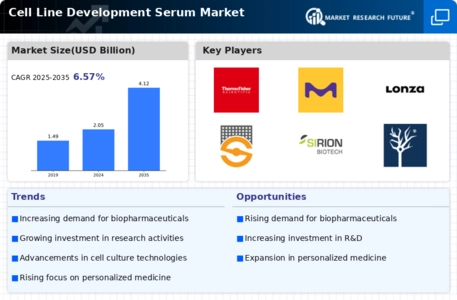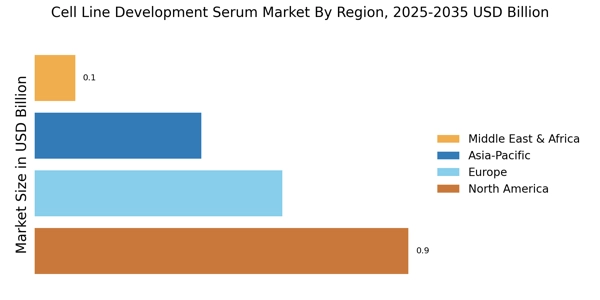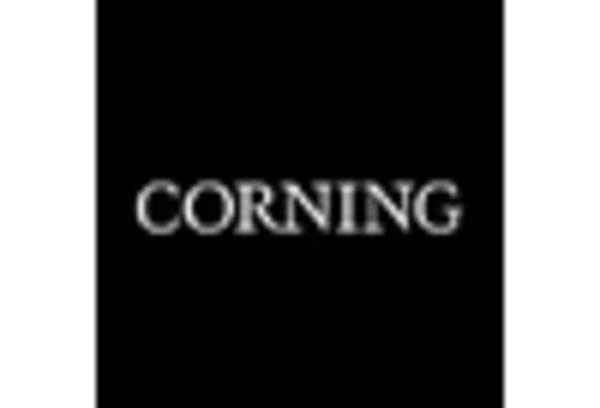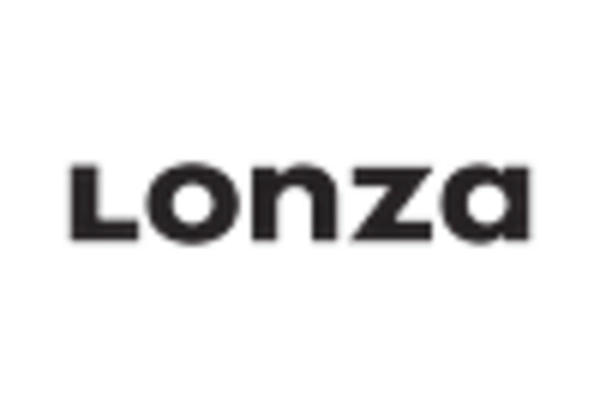Rising Demand for Biopharmaceuticals
The increasing demand for biopharmaceuticals is a primary driver of the Cell Line Development Serum Market. As the biopharmaceutical sector expands, the need for effective cell line development becomes crucial. In 2023, the biopharmaceutical market was valued at approximately 300 billion USD, with projections indicating a growth rate of around 7% annually. This growth necessitates the use of specialized serums to enhance cell line development processes, thereby driving the market for cell line development serums. The ability to produce monoclonal antibodies and recombinant proteins efficiently relies heavily on the quality of the serum used in cell culture. Consequently, the Cell Line Development Serum Market is poised to benefit significantly from this upward trend in biopharmaceutical production.
Growing Focus on Regenerative Medicine
The growing focus on regenerative medicine is emerging as a key driver for the Cell Line Development Serum Market. Regenerative medicine aims to repair or replace damaged tissues and organs, necessitating the use of advanced cell culture techniques. The market for regenerative medicine is projected to reach 50 billion USD by 2026, highlighting the increasing interest in this field. As researchers and clinicians explore new therapies, the demand for high-quality cell line development serums will likely increase, as these serums are essential for cultivating the necessary cell types for regenerative applications. This trend indicates a promising future for the Cell Line Development Serum Market.
Advancements in Cell Culture Technologies
Technological advancements in cell culture methodologies are significantly influencing the Cell Line Development Serum Market. Innovations such as 3D cell culture and bioreactor systems are enhancing the efficiency and effectiveness of cell line development. These technologies allow for more accurate modeling of human physiology, which is essential for drug development and testing. The market for 3D cell culture alone was estimated to reach 2 billion USD by 2025, indicating a robust growth trajectory. As these technologies become more integrated into research and production processes, the demand for high-quality cell line development serums is expected to rise, further propelling the market forward.
Regulatory Support for Cell-Based Therapies
Regulatory support for cell-based therapies is becoming a crucial driver for the Cell Line Development Serum Market. Regulatory bodies are increasingly recognizing the potential of cell-based therapies, leading to streamlined approval processes and guidelines that encourage innovation. In recent years, several cell-based therapies have received expedited approval, reflecting a supportive regulatory environment. This trend is likely to stimulate further investment in cell line development, as companies seek to capitalize on the favorable regulatory landscape. As a result, the demand for specialized cell line development serums is expected to rise, positioning the market for substantial growth in the coming years.
Increased Investment in Research and Development
The surge in investment in research and development across various sectors, particularly in pharmaceuticals and biotechnology, is a significant driver for the Cell Line Development Serum Market. In 2023, R&D spending in the pharmaceutical sector reached approximately 200 billion USD, reflecting a commitment to innovation and new product development. This investment is crucial for developing new therapies and improving existing ones, which in turn increases the demand for effective cell line development serums. As researchers seek to optimize their cell culture conditions, the reliance on specialized serums will likely grow, thereby enhancing the market's prospects.


















Leave a Comment